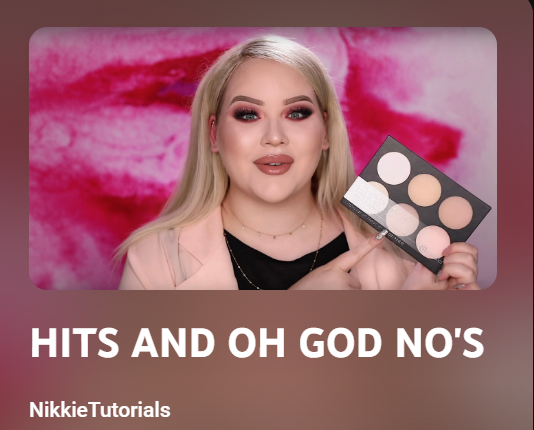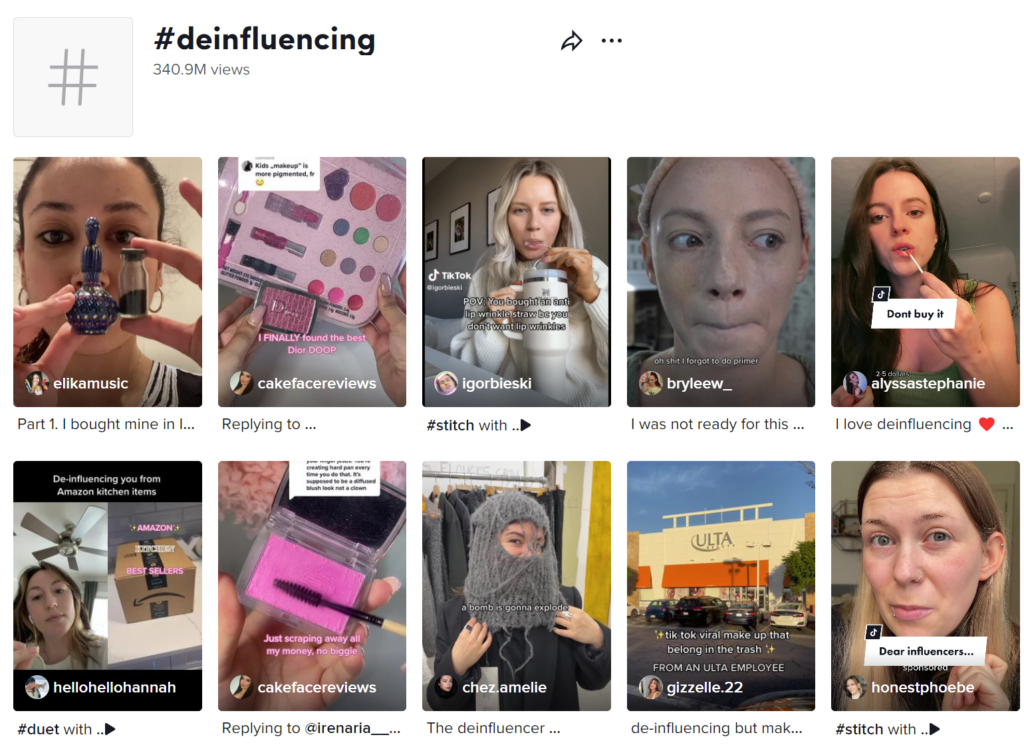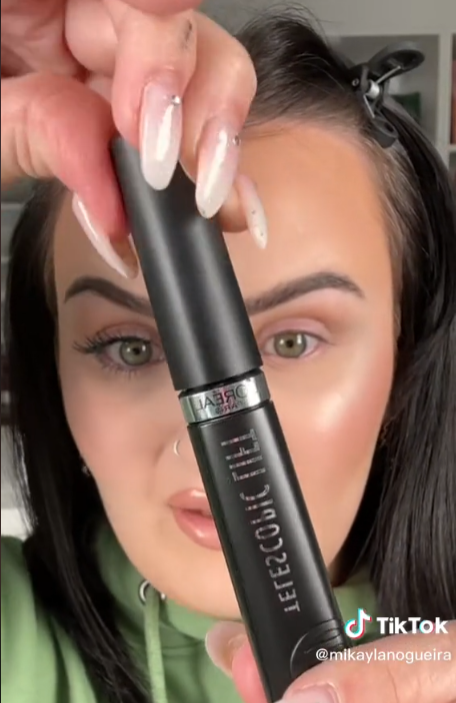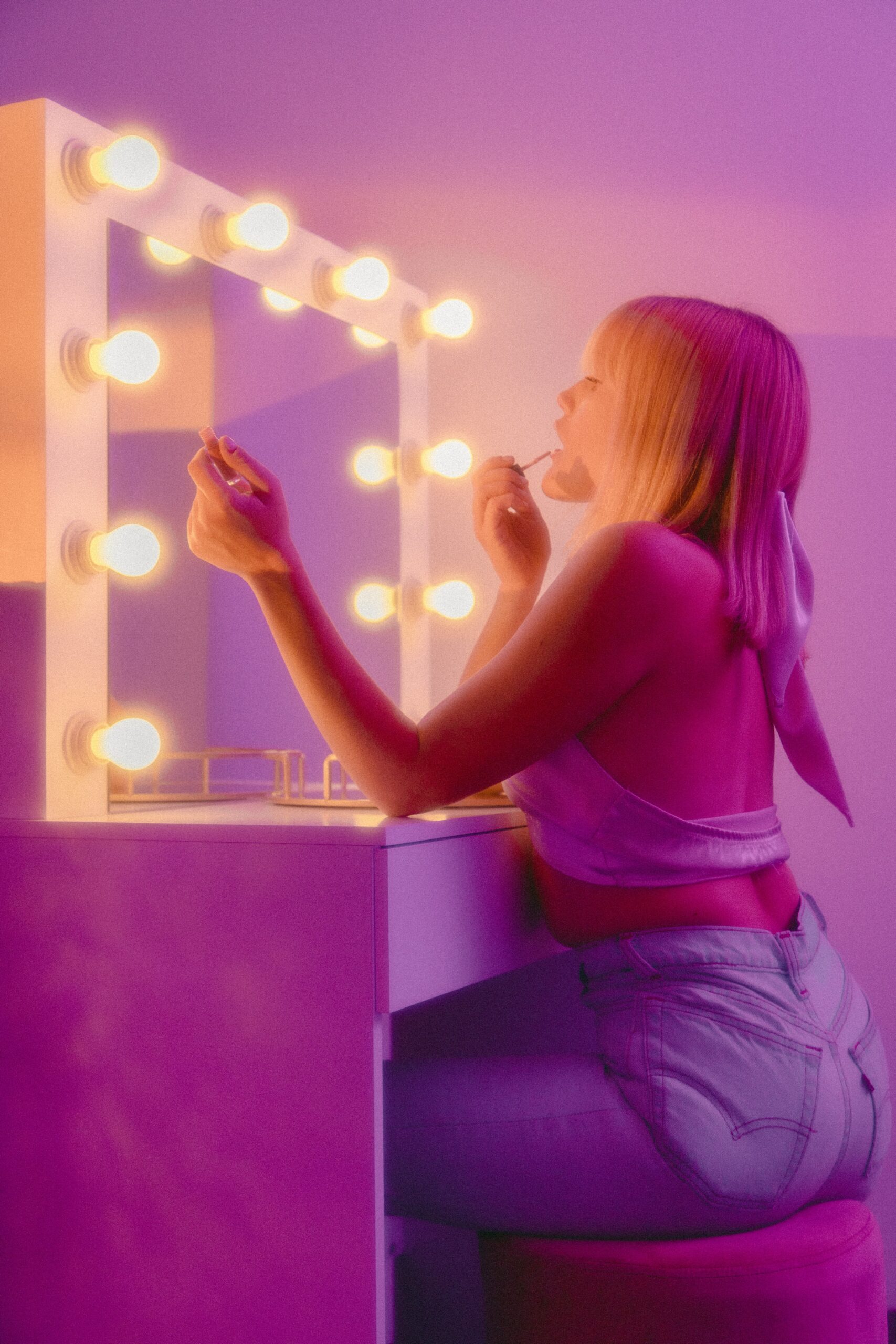In early 2023, a new social media trend began taking the world by storm: deinfluencing. Shortly after these types of posts rose to popularity, it became clear: the new deinfluencing trend is not going away soon. The shift towards deinfluencing has many influencers, content creators, and marketers worried. Where is this movement heading? Where did it come from? How might it affect the creator economy? It’s overwhelming to process the new information, especially when deinfluencing is a very recent trend. However, knowledge is power, and if you educate yourself on the deinfluencing movement, you will have the tools to navigate the new normal. Read on to learn about the deinfluencing movement and why it might not be bad for the creator economy.
What is Deinfluencing?
In traditional influencer marketing, brands pay creators to promote a product or service to their followers. This usually involves brand deals between the influencer and the company. Influencers speak positively about the product, encouraging their followers to purchase it, having been “influenced” to do so. Think of deinfluencing as the opposite of this- creators share products they believe are not worth the cost or hype, and a brand does not pay them to share that opinion. The movement started primarily in the beauty industry, but it’s been exploding. On TikTok alone, the #deinfluencing tag has over 340 million views! Deinfluencing is becoming a major trend across multiple platforms and isn’t going anywhere.
Where did Deinfluencing Come From?

This type of trend is not new, but we have not seen it done on this scale before. Take the beauty industry, for example. Throughout the last ten years, popular YouTube beauty gurus have uploaded videos showing off products they deem worth purchasing and products that are not. Beauty influencer superstar NikkieTutorials hosted a popular series, “HITS AND OH GOD NO’S,” where she shared new products she loved and ones she hated. In 2018, beauty veteran Jeffree Star posted a viral video, “FULL FACE OF BRANDS THAT HATE ME,” which amassed over 44 million views. There’s always been something alluring about brutal honesty from influencers. People aren’t interested in seeing only paid collaborations: they want to see complete honesty. This push for transparency isn’t necessarily a bad thing.
What do Examples of Deinfluencing Look Like?

Currently, deinfluencing content is being shared most often on TikTok, Instagram, and YouTube. In these videos or posts, creators take a product, usually a viral one, and explain why they don’t believe it’s worth your money. So far, the focus has been on beauty and lifestyle products, but that is expanding. The creator’s total honesty and transparency characterize these reviews. Often, these videos include some mention of the content not being sponsored. Browsing the hashtag on TikTok or Instagram will give you plenty of examples of what deinfluencing looks like. Much like traditional influencing, the posts persuade the audience, only in the opposite direction.
Why is Deinfluencing Growing Rapidly?
Deinfluencing as we know it today only began recently, in January 2023. Yet, the trend has exploded in under two months. What is the reason for this rapid growth? People want the truth. Many influencers are willing to promote a product they don’t like for the right compensation.
Recent scandals from influencers, such as TikTok star Mikayla Nogueira’s mascara controversy, have made some consumers suspicious of influencer marketing. In Mikayla’s case, L’Oreal paid her to promote their new mascara. In the viral TikTok, Mikayla shows herself applying the mascara, then states she will apply a second coat. The video cuts to a new clip from a different angle, where it’s clear false eyelashes have been applied. Fans, followers, and other beauty influencers called Mikayla out for lying about the results of the mascara. What seemed like a minor incident became a massive controversy; this is only one example.
There have been plenty of similar scandals in recent years. Issues like this make people distrust influencers, giving rise to the voices of deinfluencers calling out over-hyped products. This might sound like a major issue for influencers who make much of their income from sponsored advertisements and brand deals.

Will Deinfluencing Destroy Influencer Marketing?
The short answer is no. The deinfluencing movement will not threaten influencer marketing. As mentioned earlier, this trend is not new, especially in the beauty world. Brutally honest, unsponsored product reviews have never stopped the success of influencer marketing, and that won’t change. Many consumers intentionally seek unsponsored reviews of products before making a purchase. It’s perfectly reasonable to be concerned, especially if you are an influencer, but there’s no actual cause for alarm. The deinfluencer movement might become great for creators, and we will explore why.
Our Take: Deinfluencing will Strengthen Influencer Marketing
While it might sound confusing, let us break down the logic. Deinfluencing is all about honest, unfiltered, unsponsored product reviews. Creators making these deinfluencing videos have purchased the products with their own money and are not being paid to review them. So what will this do to influencer marketing? Deinfluencing will prompt more genuine and authentic influencers. Instead of accepting brand deals from any company willing to pay them, major influencers will become more selective by promoting products they actually enjoy.
We can expect less over-hyping of viral products, more transparency in paid advertisements, and overall more intentional influencing. If you are a content creator or influencer, you can absolutely use this to your advantage. The deinfluencing craze will reward influencers who are open and honest with their followers.
Do not promote products you don’t like. Your followers will appreciate your authenticity, and a passion for the products will translate into your content. In summation, deinfluencing offers a major opportunity for creators to capitalize on genuine promotions of products they deem worthy of sharing.
Deinfluencing Will be a Good Thing for the Creator Economy
If you are an influencer, having this knowledge of the deinfluencing movement will help you make the most of it. If you aren’t currently a content creator, the overwhelming popularity of the deinfluencing movement offers a way in: to start creating this kind of content. It’s the perfect time to strike while the iron is hot. While you won’t earn a brand deal for deinfluencing a product, you can still monetize the content. Whether you fall on the influencer or deinfluencer side, this movement can help you if you approach it correctly. Now that you know about deinfluencing, you know there is nothing to fear.


